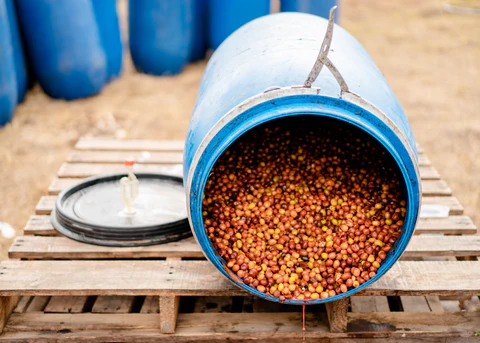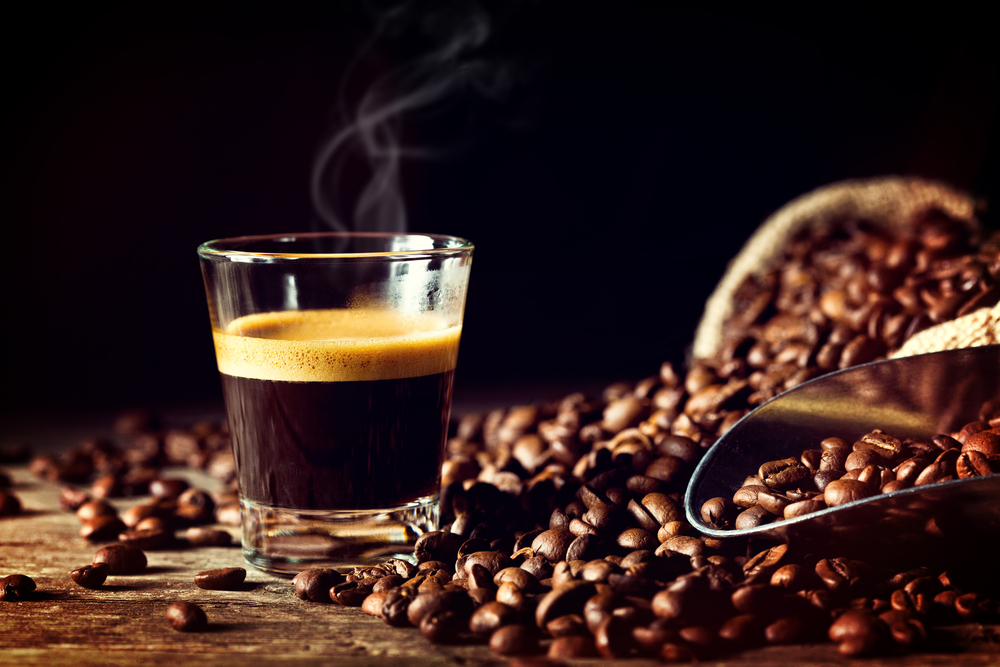There’s something undeniably charming about the Moka pot. This little coffee maker has been a staple in homes around the world, particularly in Italy, where it originated. Its sleek design and promise of a strong, flavorful brew make it a beloved choice for coffee enthusiasts.
But what sets the Moka pot apart from other coffee brewing methods? It’s all about the double chamber system. This ingenious design not only brews a robust cup of coffee but also brings a bit of style and tradition to your morning routine. Let’s dive into the magic of the Double Chamber Moka Pot and see why it has captured the hearts of so many.
The Anatomy of a Moka Pot
To truly appreciate the magic of the Moka pot, you need to understand its anatomy. This iconic coffee maker consists of three main parts, each playing a crucial role in the brewing process:

- Bottom Chamber (Water Chamber):
- This is where you pour the water that will be heated and turned into steam.
- Made of sturdy aluminum or stainless steel, it withstands high pressure.
- Features a safety valve to release excess pressure and ensure safe brewing.
- Middle Funnel (Coffee Ground Holder):
- Holds the coffee grounds.
- Sits above the water chamber and has a tube that extends into the water.
- Allows water vapor to rise through the coffee grounds, extracting rich flavors.
- Top Chamber (Coffee Collection Chamber):
- Collects the brewed coffee.
- As the steam rises through the coffee grounds, it condenses back into liquid coffee here.
- Equipped with a spout for easy pouring.
Each component of the Moka pot works in harmony to deliver that signature bold coffee. Understanding these parts not only helps in using the Moka pot correctly but also in appreciating the ingenuity behind its design.
What is the Double Chamber in a Moka Pot?
Ah, the mysterious Double Chamber. If you’re reading this, chances are you’ve made friends with the charming Moka Pot. You’ve probably cranked that handle, heard the hiss, and savored the delicious nectar it churns out. But have you ever paused to wonder what’s really going on in there? Like, how does that tiny Italian contraption create such magic? Well, my friends, the secret sauce—or shall we say, secret brew—is in its Double Chamber.
The Double Chamber is like the coffee world’s equivalent of a rock band’s drummer and bassist. The bottom chamber’s where the water’s hanging out, waiting for its big break.
Meanwhile, the upper chamber is where the brewed coffee takes the spotlight, stealing the show. The magic happens between these chambers, turning your run-of-the-mill morning ritual into an espresso-filled extravaganza.

How the Double Chamber System Works
The Moka pot’s brewing process is a fascinating blend of simplicity and science. Here’s a step-by-step guide to how the double chamber system works:
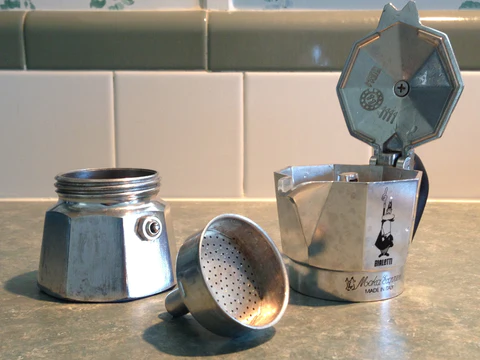
- Filling the Bottom Chamber with Water:
- Start by unscrewing the top and bottom chambers of the Moka pot.
- Fill the bottom chamber with cold water up to the safety valve. This ensures there’s enough water for brewing without overfilling.
- Adding Coffee Grounds to the Middle Funnel:
- Place the middle funnel into the bottom chamber.
- Fill the funnel with your favorite medium-fine coffee grounds. Don’t pack the coffee too tightly, as this can obstruct the water flow.
- Assembling and Placing on the Stove:
- Screw the top chamber onto the bottom chamber securely.
- Place the Moka pot on the stove over medium heat. Ensure the handle is positioned away from direct heat to avoid melting or burning it.
- How Heat Creates Pressure in the Bottom Chamber:
- As the water in the bottom chamber heats up, it turns into steam.
- The increasing steam pressure forces the water up through the funnel tube.
- The Journey of Water Through the Coffee Grounds to the Top Chamber:
- The hot water, now in vapor form, passes through the coffee grounds in the middle funnel.
- This process extracts the coffee’s rich flavors and oils.
- The brewed coffee then rises through the central tube and collects in the top chamber.
- You’ll know the coffee is ready when you hear a hissing and gurgling sound, indicating that all the water has moved from the bottom chamber to the top.
The Moka pot’s double chamber system is a beautiful example of how heat and pressure can create a delightful coffee experience. With a little practice, you’ll be brewing strong, flavorful coffee with ease and style, just like a true coffee aficionado.
The Science Behind the Perfect Brew
Brewing coffee with a Moka pot isn’t just about combining water and coffee grounds—it’s a precise dance of pressure, temperature, and timing. Let’s break down the science behind achieving that perfect brew.
1. Pressure and Temperature: The Dynamic Duo
- Pressure:
- The Moka pot operates under pressure, created as the water in the bottom chamber heats up and turns to steam.
- This steam pressure forces the water through the coffee grounds, extracting flavors efficiently.
- The pressure in a Moka pot is lower than that in an espresso machine, usually around 1-2 bars compared to the 9 bars typical of espresso.
- Temperature:
- The ideal brewing temperature for coffee is between 195°F and 205°F (90°C to 96°C).
- If the water gets too hot, it can over-extract the coffee, leading to bitterness.
- The Moka pot’s design ensures that the water temperature stays within the optimal range as it passes through the coffee grounds.
2. The Role of Grind Size and Coffee Amount
- Grind Size:
- A medium-fine grind is best for the Moka pot. Too fine, and it can clog the filter; too coarse, and the coffee will be under-extracted.
- The right grind size allows for even extraction, ensuring a balanced flavor profile.
- Coffee Amount:
- Filling the funnel with the right amount of coffee is crucial. A heaping amount of coffee grounds, leveled off without tamping, is ideal.
- Too much coffee can prevent proper water flow, while too little can lead to weak coffee.
3. Importance of Water Temperature and Timing
- Water Temperature:
- Starting with cold water allows for a gradual increase in temperature, ensuring that the coffee grounds are evenly extracted.
- Some coffee enthusiasts prefer to use preheated water to speed up the brewing process and reduce the risk of over-extraction from prolonged heating.
- Timing:
- The brewing process in a Moka pot typically takes about 5-10 minutes.
- Keeping an eye (and ear) on the process is important. Once you hear the hissing sound, remove the pot from the heat to prevent burning the coffee.
Benefits of Using a Moka Pot
The Moka pot is more than just a coffee maker; it’s a gateway to rich, espresso-like coffee without the need for fancy equipment. Let’s explore the perks of brewing with a Moka pot.
1. Strong, Espresso-like Coffee Without Expensive Equipment
- Affordable Espresso Alternative:
- The Moka pot brews a strong, concentrated coffee that’s similar to espresso, without the hefty price tag of an espresso machine.
- You get to enjoy rich, robust coffee with intense flavors, perfect for those who love a bold cup.
- Versatile Coffee Base:
- The coffee brewed in a Moka pot serves as an excellent base for various drinks like lattes, cappuccinos, and macchiatos.
- Its strength and flavor make it ideal for mixing with milk or enjoying straight.
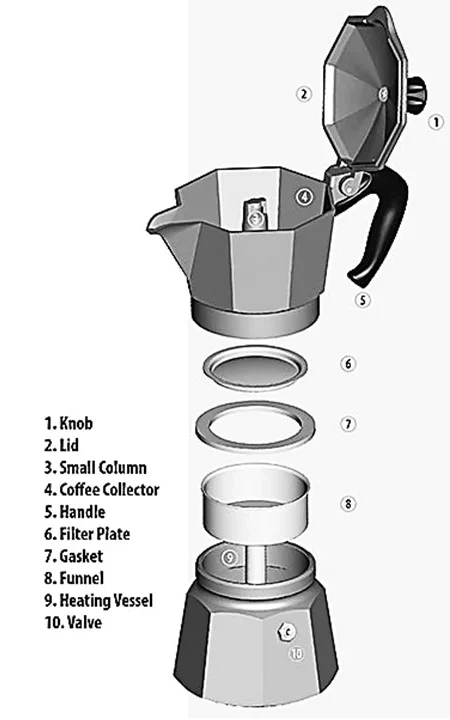
2. Simple and Durable Design
- No-Fuss Brewing:
- The Moka pot’s straightforward design makes it easy to use, even for beginners. No need to worry about complicated settings or machinery.
- Just fill with water and coffee, heat, and enjoy.
- Built to Last:
- Made from durable materials like aluminum or stainless steel, the Moka pot is designed to withstand high heat and pressure.
- With proper care, a Moka pot can last for years, making it a reliable addition to your coffee arsenal.

3. Portability and Ease of Use
- Compact and Lightweight:
- The Moka pot’s compact size makes it highly portable, perfect for travel or camping.
- You can easily pack it in your bag and enjoy quality coffee wherever you go.
- Minimal Maintenance:
- Cleaning a Moka pot is a breeze. Simply rinse the parts with water after each use and occasionally deep clean to prevent buildup.
- No need for specialized cleaning agents or tools.
- Energy Efficient:
- The Moka pot requires only a stove or heat source to brew, making it an energy-efficient choice.
- It’s ideal for those who want to reduce their energy consumption while still enjoying great coffee.
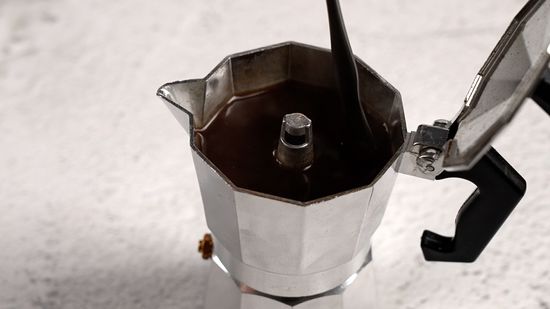
In a world of high-tech gadgets and fancy appliances, the Moka pot stands out for its simplicity, durability, and ability to deliver a top-notch coffee experience. Whether you’re at home or on the go, the Moka pot is a trusty companion for any coffee lover.
Tips for Brewing the Best Moka Pot Coffee
Brewing with a Moka pot is both an art and a science. Here are some tips to help you master the process and brew the best coffee possible.
1. Choosing the Right Coffee Beans and Grind Size
- Coffee Beans:
- Opt for high-quality, freshly roasted coffee beans. Beans with rich, bold flavors, such as dark roasts, work particularly well with the Moka pot.
- Experiment with different varieties to find the flavor profile that suits your taste.
- Grind Size:
- Use a medium-fine grind, similar to table salt. This grind size allows for optimal extraction without clogging the filter.
- Avoid using too fine a grind (like espresso) as it can cause over-extraction and clogging, resulting in bitter coffee.
2. Properly Filling the Chambers
- Bottom Chamber:
- Fill the bottom chamber with cold water up to just below the safety valve. This ensures the right amount of water for brewing.
- Avoid overfilling, as this can lead to weak coffee and potential safety issues.
- Middle Funnel:
- Fill the middle funnel with coffee grounds, leveling them off without packing them down. Overpacking can impede water flow and lead to over-extraction.
- Ensure the funnel is securely placed in the bottom chamber.
3. Managing Heat and Timing
- Heat Management:
- Place the Moka pot on a stove over medium heat. High heat can cause the coffee to brew too quickly, leading to a burnt taste.
- If using a gas stove, ensure the flames do not extend beyond the base of the Moka pot to prevent overheating.
- Timing:
- Keep an eye on the brewing process. Once you hear a hissing and gurgling sound, the brewing is nearly complete.
- Remove the Moka pot from the heat immediately to avoid burning the coffee. Let it finish brewing off the heat if needed.
4. Cleaning and Maintaining Your Moka Pot
- Regular Cleaning:
- After each use, disassemble the Moka pot and rinse all parts with warm water. Avoid using soap, as it can leave a residue that affects the coffee’s taste.
- Dry all parts thoroughly before reassembling to prevent corrosion and mold growth.
- Deep Cleaning:
- Periodically deep clean your Moka pot by soaking the parts in a mixture of water and white vinegar. This helps remove any coffee oils and mineral buildup.
- Rinse thoroughly after soaking to ensure no vinegar taste remains.
- Maintenance:
- Check the rubber gasket and safety valve regularly for wear and tear. Replace them if they appear damaged or worn out to maintain a proper seal and ensure safe brewing.
- Store your Moka pot in a dry place, disassembled, to allow airflow and prevent any residual moisture from causing damage.
Common Mistakes to Avoid
Even seasoned coffee brewers can stumble upon a few pitfalls when using a Moka pot. Here are some common mistakes to watch out for:

1. Overfilling or Underfilling Water and Coffee Grounds
- Water:
- Overfilling the water chamber can lead to weak coffee and potential safety hazards if the water overflows.
- Underfilling can result in insufficient steam pressure, leading to under-extracted, weak coffee.
- Always fill the water just below the safety valve.
- Coffee Grounds:
- Overfilling the funnel with coffee grounds can obstruct the flow of water, causing over-extraction and a bitter taste.
- Underfilling can lead to a watery brew lacking in flavor.
- Level off the coffee grounds without packing them down to ensure proper extraction.
2. Using Too High or Too Low Heat
- High Heat:
- Using too high heat can cause the water to boil too rapidly, leading to over-extraction and a burnt taste.
- It can also cause the coffee to sputter and overflow.
- Low Heat:
- Too low heat may not generate enough pressure to push the water through the coffee grounds, resulting in under-extracted coffee.
- Aim for medium heat to ensure a steady, even brewing process.
3. Not Cleaning the Pot Properly
- Residual Oils:
- Coffee oils can build up over time, affecting the flavor of your brew. Regular cleaning prevents this buildup.
- Rinse all parts with warm water after each use and avoid using soap.
- Mold and Corrosion:
- Failing to dry the Moka pot thoroughly can lead to mold growth and corrosion.
- Disassemble and dry all parts completely before storing.
Beyond the Basics: Advanced Insights into the Double Chamber
You know how some athletes wear lucky socks or do a weird pre-game dance? Consider these tips your pre-brew rituals, designed to take your Double Chamber Moka Pot game from “meh” to “magnifico.
Grind Size:
Fine but not too fine—think table salt. The grind size affects the pressure, which in turn affects how your coffee extracts. Dialing coffee beans in, and you’re golden.
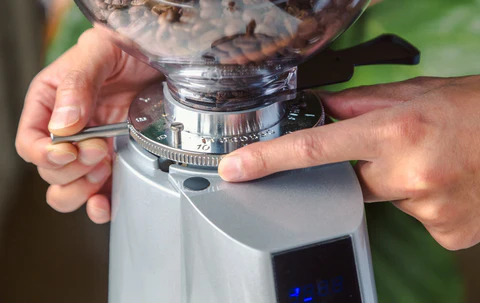
Stovetop Settings:
Your stove isn’t just for frying eggs; it’s a tool in your coffee arsenal. A medium-low heat setting usually does the trick. Too high, and you risk a burnt brew; too low, and you’ll be sipping Christmas coffee in July.
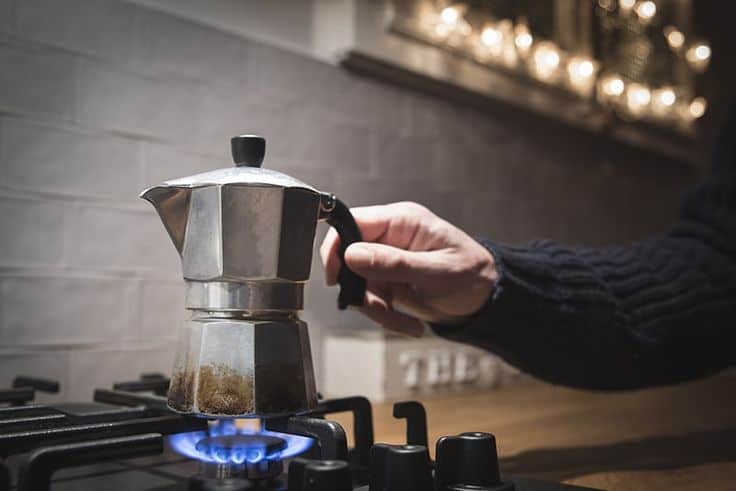
Conclusion
The Moka pot truly exemplifies the magic of simplicity and efficiency through its double chamber system. This ingenious design not only produces a strong, espresso-like coffee but also offers an affordable and accessible way to enjoy quality coffee at home. With its durable construction, ease of use, and portability, the Moka pot stands out as a beloved tool for coffee lovers everywhere.
Whether you’re a seasoned coffee enthusiast or just starting your journey, brewing with a Moka pot is an experience worth trying. Its ability to deliver rich, robust coffee with minimal fuss makes it a valuable addition to any kitchen.
So, why not give the Moka pot a try? Experiment with different coffee blends, add a touch of spice, or craft your own unique recipes. The possibilities are endless, and the journey to discovering your perfect brew is a rewarding one.
We’d love to hear from you! Share your experiences, favorite recipes, and any tips you’ve discovered along the way. Let’s brew together and enjoy the magic of the Moka pot. Happy brewing!
Disclosure: Our blog contains affiliate links to products. We may receive a commission for purchases made through these links. However, this does not impact our reviews and comparisons. We try our best to keep things fair and balanced, in order to help you make the best choice for you.

